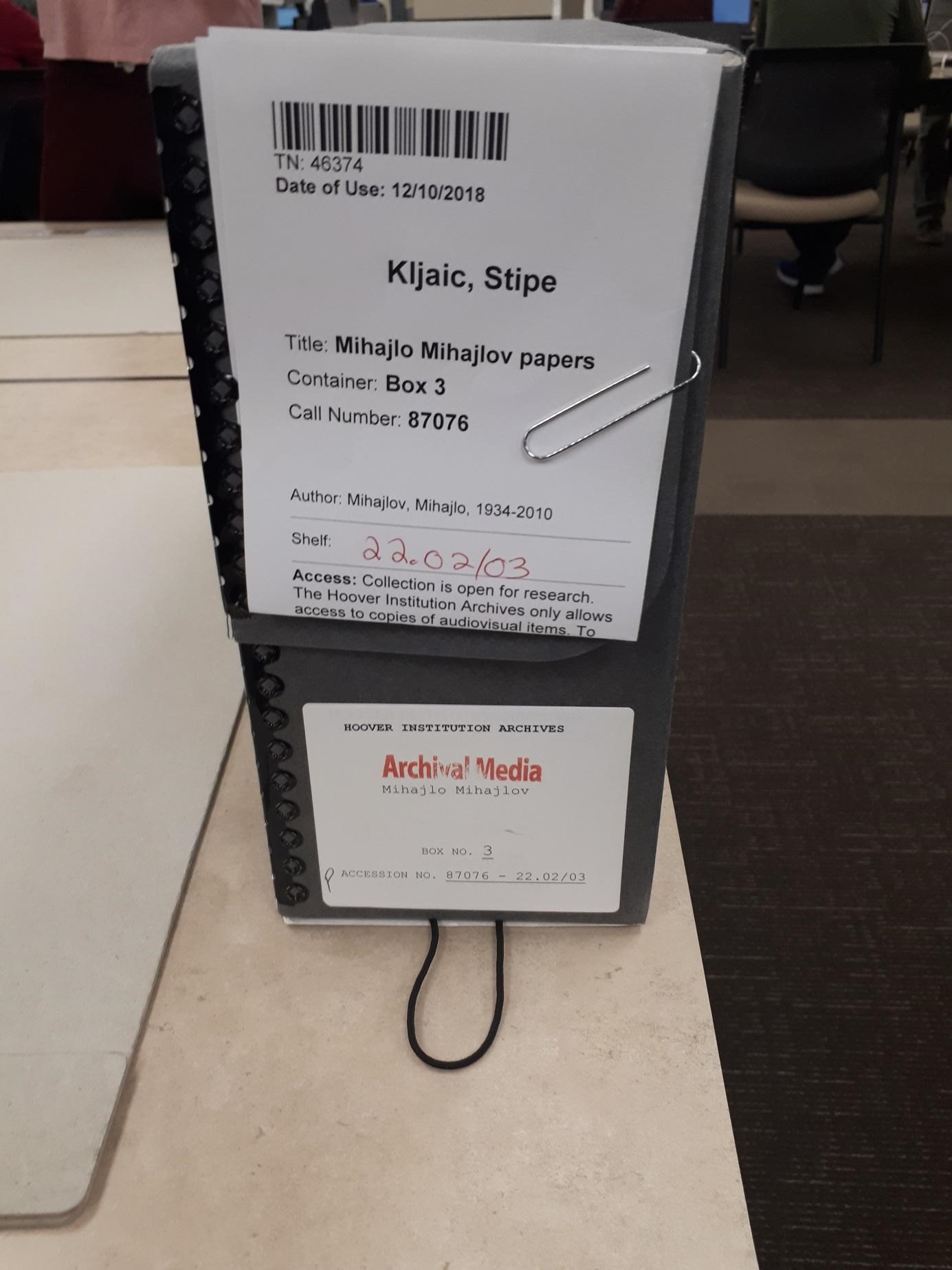

The Mihajlo Mihajlov collection gives an overview of his life and work as a Yugoslav dissident who lived in exile in the USA since 1978. Due to his efforts to democratize Tito's Yugoslavia and introduce political, economic and cultural pluralism, he became a political prisoner, first in the period from 1966 to 1970 and later from 1974 to 1977. After the “Mihajlov case” in Yugoslavia in 1966, a wave of dissident movements emerged in the Eastern bloc countries. Together with Milovan Đilas, Mihajlov became one of the most famous figures of the dissident movement in the Cold War world in general. The collection is stored at the Hoover Institution, located at Stanford University in the USA.
Knuts Skujenieks (b. 1936) is a Latvian poet, a dissident who was sentenced in 1962 to seven years in prison for anti-Soviet activities. The collection holds manuscripts from all his creative life, but the most powerful are the manuscripts he created during his imprisonment: poems and other literary texts, correspondence with his wife and colleagues, and many other documents that reflect the development of his poetic language and political consciousness.
 Questionnaire on the Yugoslav emigrant in Bogdan Radica's intelligence file. 24 June 1963. Archival document
Questionnaire on the Yugoslav emigrant in Bogdan Radica's intelligence file. 24 June 1963. Archival document
A number of intelligence files included in the collection are files on members of émigré organisations (the so-called enemy emigration). Such files usually contain so-called ‘bulletins’ , i.e. official reports from regional centres with data on an émigré’s activities abroad, but also dispatches from regional centres, questionnaires on Yugoslav émigrés, original documents from earlier periods proving a person's compromising status or activities, photos, personal notes, etc. Mutual relations between enemy emigrant communities of differing ethnicities, divergences and conflicts between individuals and émigré organisations, subversive activities, directives and references on enemy activities against Yugoslav citizens, propaganda and publishing (pamphlets, magazines), meetings and events, relations with anti-state oriented individuals and groups in Yugoslavia (so-called domestic enemies), etc. were subject to surveillance (Mikšić, Iseljeništvo: Vodič kroz fondove i zbirke HDA, 2015, 412).
This group of persons under the State Security Service's surveillance included Bogdan Radica (Split, 26 August 1904 – New York, 5 December 1993), writer, publicist, journalist and historian, as well as one of the most prominent Croatian émigrés after 1945, whose personal legacy was described in the COURAGE Registry. His file in the collection has 62 pages, it is registered as file no. 319291, and it is preserved both on paper and microfiche. The documents were created in period from the mid-960s to 1990, but they also include information on Radica's activities abroad in the preceding period. The reason for surveillance and the creation of the file was the assessment that Radica was “one of the remarkably active emigrants/writers active in the émigré press” (HR-HDA-1561. SDS RSUP SRH. Intelligence files, Bogdan Radica's file, no. 319291, Official note from State Security Service's Centre in Zagreb, 18 December 1968).
Besides the standard “questionnaire on the Yugoslav emigrant,” Radica's file contains different operational notes and reports from the State Security Service's regional centres, mostly in Zagreb and Split. The main charges against him were that he participated in all anti-Yugoslav meetings and travelled to different countries (USA, Canada, Switzerland, Italy and other European counties) in order to organise enemy activities. Emphasis was placed on the fact that meetings of members of the Croatian Academy in America and discussions on political issues were organised in his home. In particular was also highlighted charges of His enemy propaganda against Yugoslavia and the “extreme anti-Yugoslav attitudes” expressed in his books or in the émigré press, radio and television stations in New York were also highlighted. The file also contains a description of his participation in organising the emigrant symposium “Croatia Today and Tomorrow,” held in Switzerland from 30 August to 1 September 1968, and “focused on further consolidation and programming of anti-Yugoslav activities” (HR-HDA-1561. SDS RSUP SRH. Intelligence files, Bogdan Radica's file, no. 319291, Note on file content, 13 March 1969). As described in the operational note from 7 September 1969, in a paper on that symposium, Radica “promoted activities designed to create an ‘Independent State of Croatia,’ a multi-party system in SFRY and better connections between émigré/ intellectuals with ‘forces’ in Yugoslavia, especially with intellectuals” (HR-HDA-1561. SDS RSUP SRH. Intelligence files, Bogdan Radica's file, no. 319291, Operational note, 7 September 1969).
Radica is also mentioned as one of the organizers of the symposium “Croatian Discussions on Freedom,” held in Lucerne, Switzerland from 30 June to 3 July 1971, whence telegrams were sent to Šime Đodan, Franjo Tuđman, Marko Veselica and other participants in the Croatian Spring (HR-HDA-1561. SDS RSUP SRH. Intelligence files, Bogdan Radica's file, no. 319291, Operational note, 19 April 1972). An agent code-named “Rade,” who was in the United States in November and December 1971, wrote in his note that Radica “greatly helped in the promotion” of dissident Milovan Đilas while he was in the US (HR-HDA-1561. SDS RSUP SRH. Intelligence files, Bogdan Radica's file, no. 319291, Note written by agent Rade, 1972). The file also contains the report that Radica, as a member of Croatian National Council, a political émigré association founded in Toronto in 1974, signed an appeal sent on 7 February 1977 to the newly-elected US President Jimmy Carter. As described in the operational note from 24 January 1980, in that appeal Croatian National Council asked for help against Tito's government, which has “over the past several years (…) systematically and brutally suppressed the cultural and political expression of Croats in their own country,” and that “this reign of terror culminated in 1971 as a response to the awakened spirit of nationalism among students and professors at the University in Zagreb” (HR-HDA-1561. SDS RSUP SRH. Intelligence files, Bogdan Radica's file, no. 319291, Operational note, 24 January 1980).
The documents are available for research and copying.
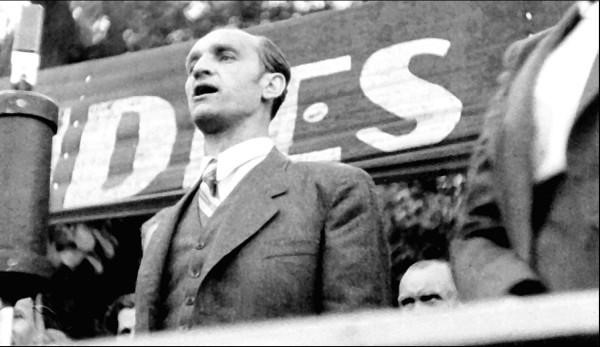

Justas Paleckis (1899–1980) was a chairman of the presidium of the Supreme Council of Soviet Lithuania from 1940 to 1974. Paleckis’ collection holds his personal papers, various manuscripts, notebooks, correspondence with Lithuanian writers and scholars, and letters from victims of Stalinist repressions. The documents reflect the aspirations and the ambitions of the Lithuanian cultural elite to preserve and develop the Lithuanian cultural heritage.


The Éva Cseke-Gyimesi Collection is arguably the most comprehensive example of Transylvanian Hungarian cultural opposition in Romania. It consists of books, manuscripts, typed texts, private correspondence, newspaper clippings, and other items reflecting Éva Cseke-Gyimesi's cultural opposition to Ceaușescu's regime. The collection allows one to understand Éva Cseke-Gyimesi's criticism exercised through her professional works, her democratic resistance marked by a truly pro-European perspective, and her struggle for human rights illustrated by letters of protest, memorandums, pamphlets, and samizdats which she authored, endorsed, or distributed.
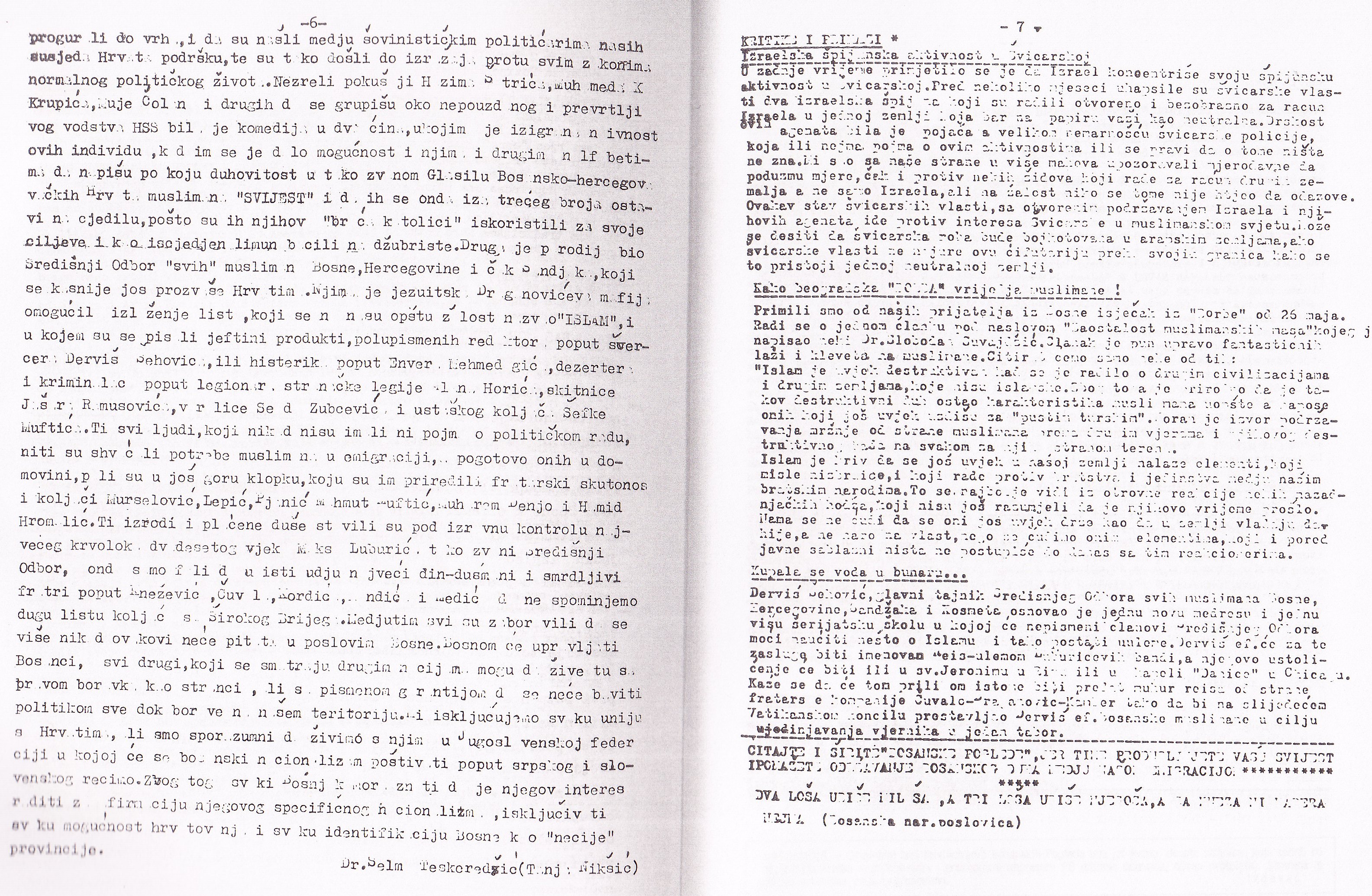

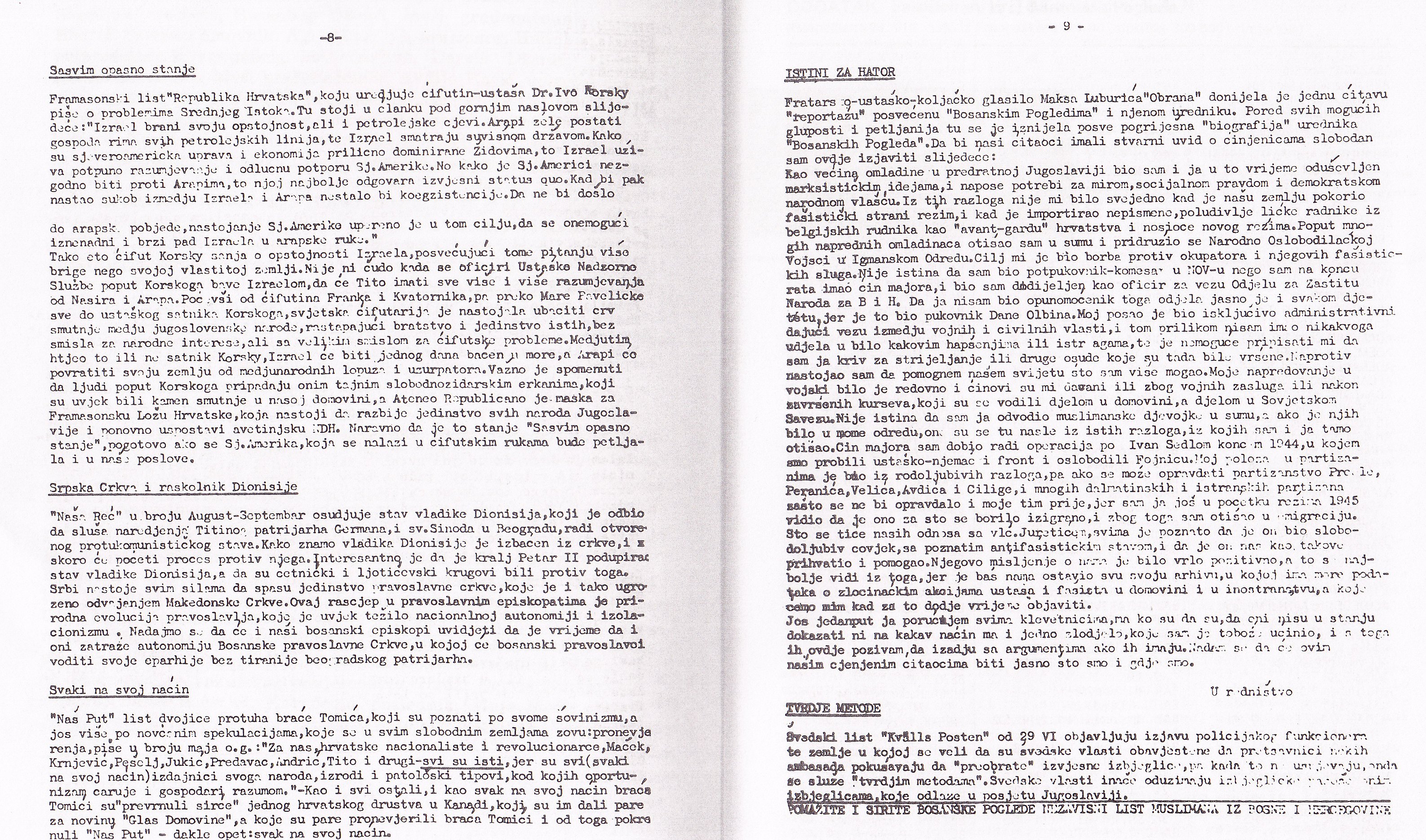
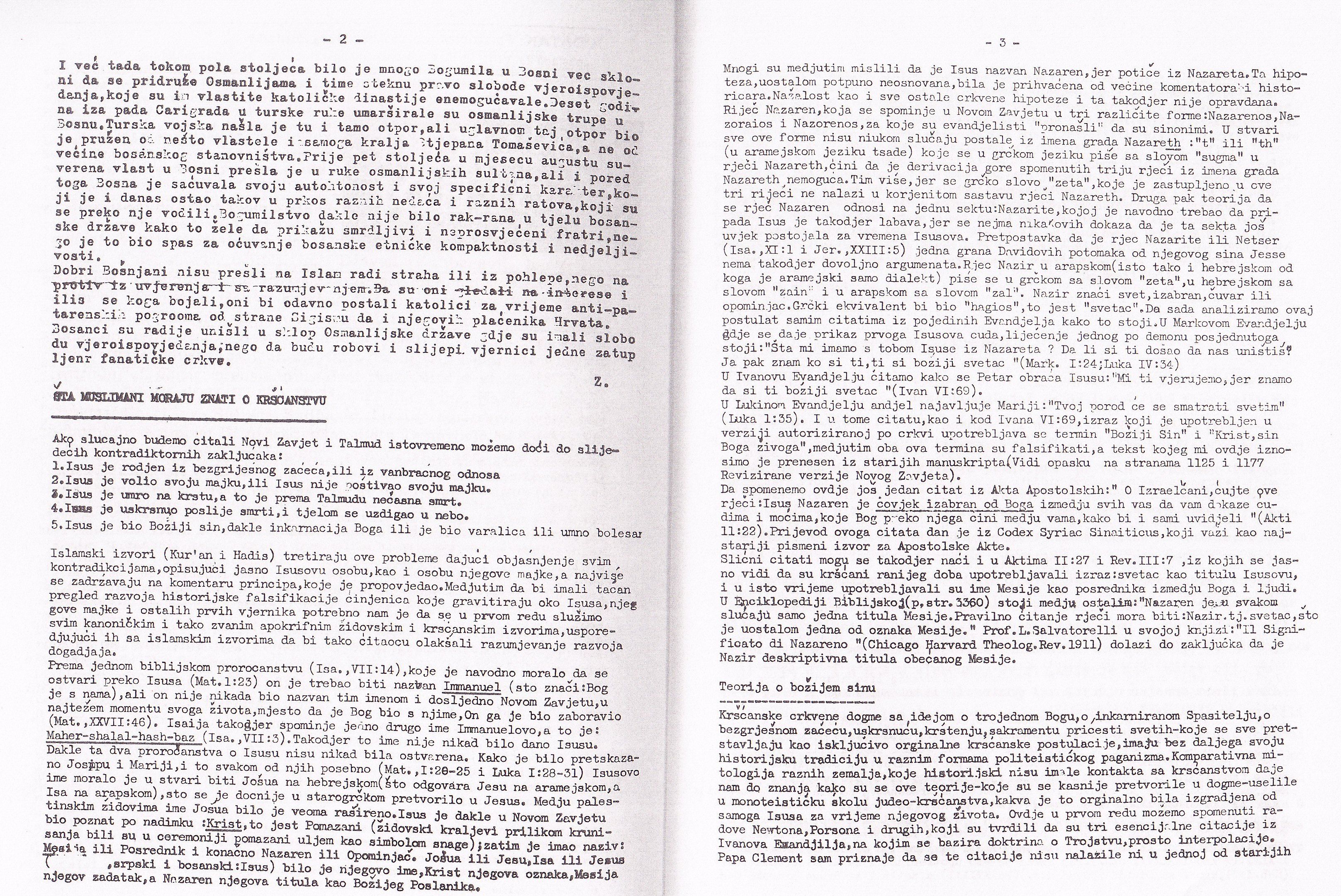
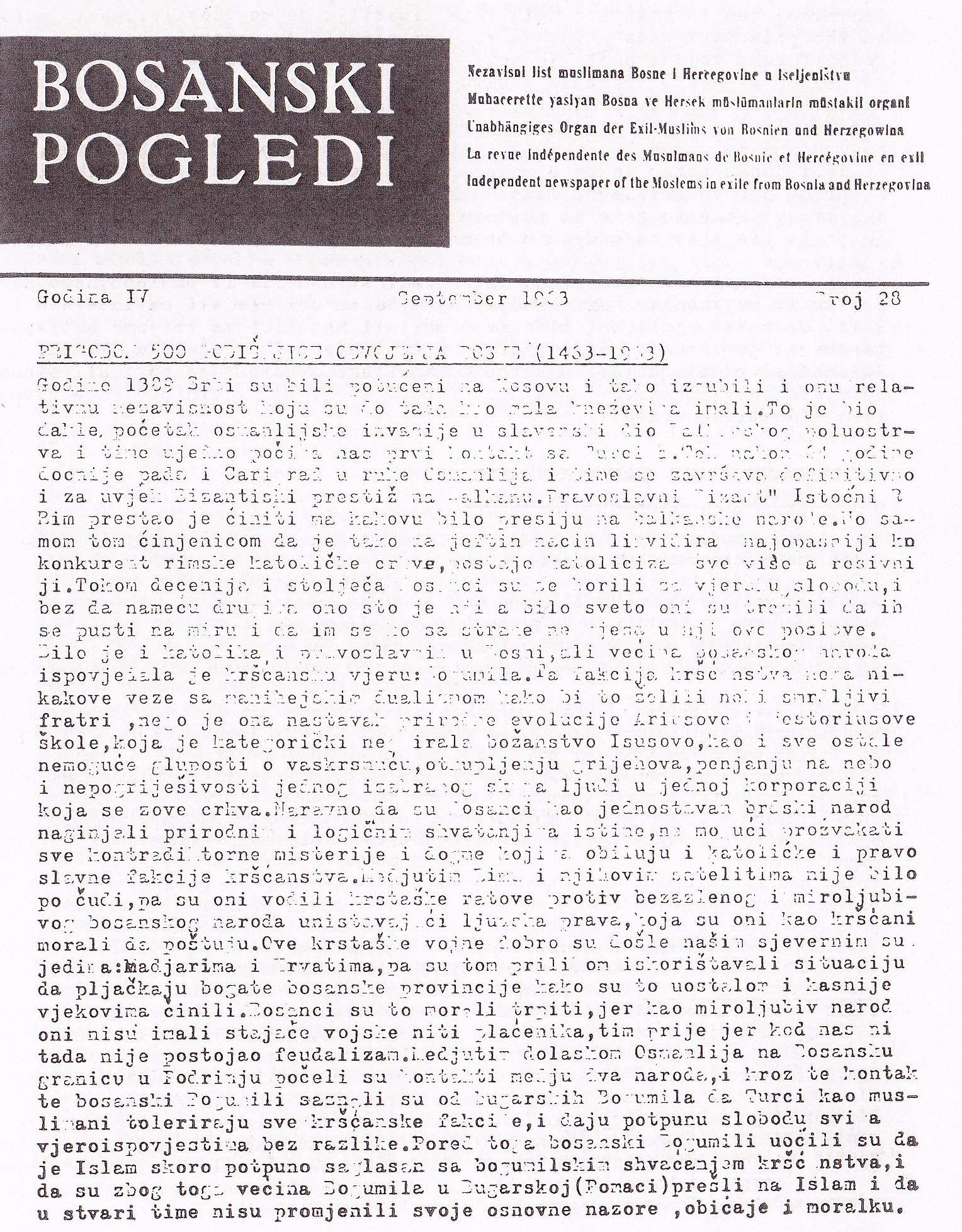
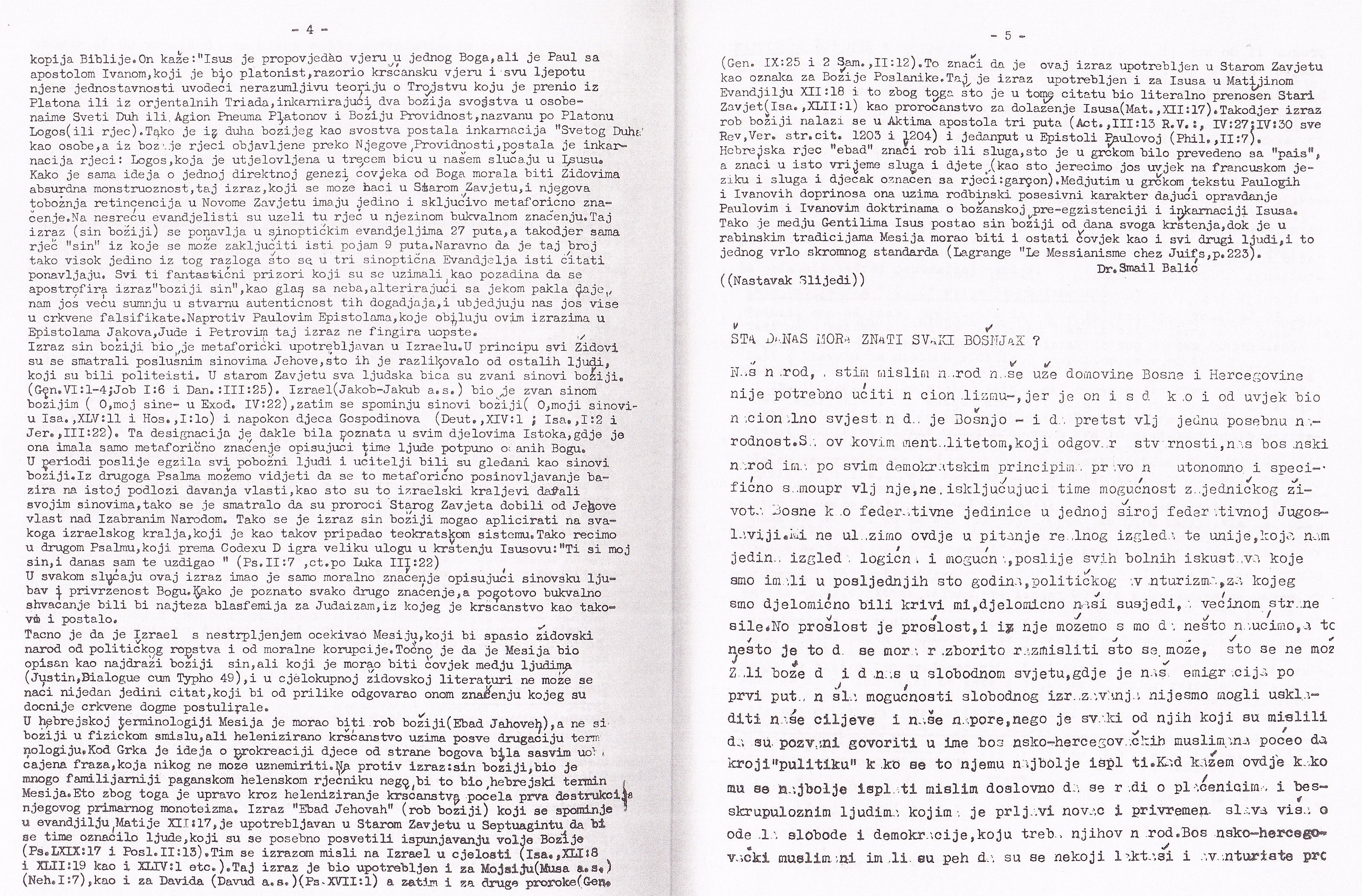
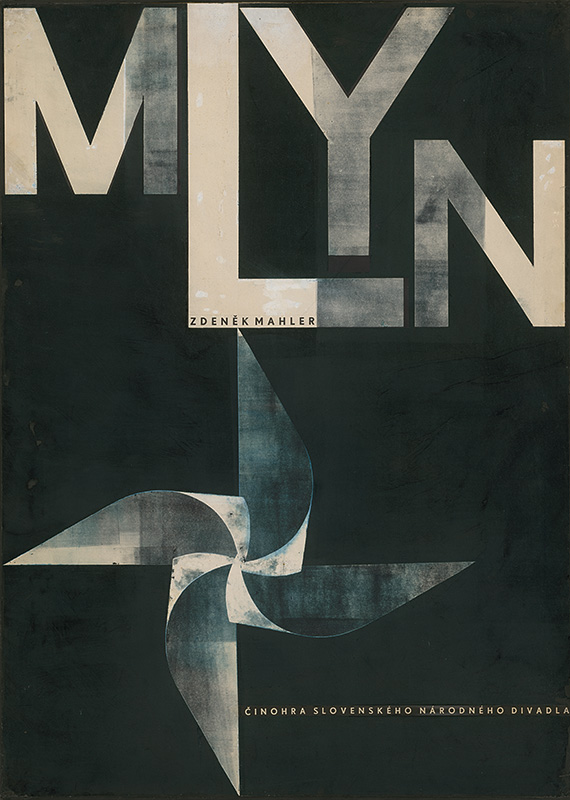

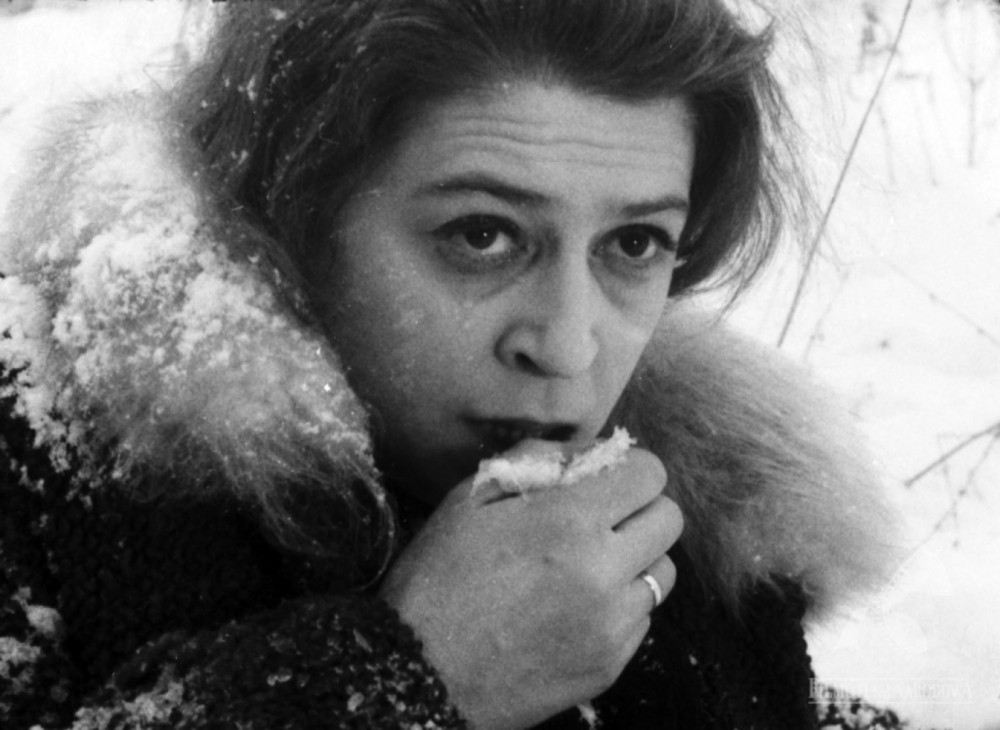

„By the railroad” is a film based on one of the novels of Zofia Nałkowska's „Medallions”, written just after the World War II (1946). This debut of Andrzej Brzozowski was banned from being shown publicly for 27 years. Zofia Nałkowska was a member of the Central Committee for Investigating German Crimes in Poland, a body documenting from 1945 to 1949 Nazi crimes on Jewish and Polish citizens during the Second World War. In her novels, Nałkowska in very modest, moderate way describes the atrocities of German occupation in Poland. The book “Medallions”, one of the most vital sources of social imagination about the World War II in Poland, is an important part of school curriculum, read by generations of Polish pupils.
Film “By the Railroad” by Brzozowski is an accurate film adaptation of Nałkowska’s novel under the same title. It concentrates on the Jewish woman who jumped off the train heading to concentration camp. She breaks her leg and lays on the ground by the railroad, while people from the nearby village debate what they should do with her. The plot of the novel and the film raises the issue (often neglected in official narrative) of Polish reactions to Holocaust and especially Jews trying to survive “on the Aryan side” - outside ghettos and concentration camps. The question of Polish “bystanders” to Holocaust, was only one of issues tackled in Nałkowska’s novels. Film by Brzozowski clearly concentrates on the indifference of the Catholic citizens of Poland in the face of perpetrations aimed at their Jewish compatriots.
Banning Brzozowski’s film from public distribution was a result of fear that this oeuvre could be used for “anti-Polish propaganda” and could “threaten Polish reason of state” (Preizner 2010). Events presented in the film contrasted with the historical narrative of Polish authorities, which presented Polish citizens as victims of Nazi crimes and neglected the importance of Jewish experience.
Film critics (Preizner 2010, Calderón Puerta 2010) state that the film itself is more suggestive than Nałkowska’s novel. Role of Halina Mikołajska, austere filming, concentration on one short plot have a great influence on the audience. However, the film was shown in public television broadcast only in 1992 (sic!), late in the night and without any meaningful public discussion.
Vasyl Symonenko was a well-known Ukrainian poet, journalist, and human rights activist. Like many of his contemporaries, he was emboldened by Khrushchev's Thaw and became much more politically active in the early 1960s, working with Horska and Les Taniuk to find mass graves of NKVD victims outside Kyiv. After locating one grave site near Bykivnia, this trio wrote the Kyiv City Council of its location in “Memorandum No. 2.” As a consequence, Symonenko was severely beaten by police, which exacerbated his kidney disease and resulted in his untimely death at 28 in 1963.
This placard was created by Alla Horska after the death of Symonenko, which both rocked and emboldened this community of activists. Included in the painting were Soviet symbols: the hammer and sickle, overlain with a bayonet and other weapons pointed at the individual, killing him and drawing blood. The droplets of blood were rendered here as berries of the guelder-rose, one of the national symbols of Ukraine. Symonenko's death marked the beginning of a decade of repression against Ukrainian artists, intellectuals, human rights activists, and citizens. Implicit in Horska's imagery is the squelching of another national cultural revival in Ukraine by the Soviet state.
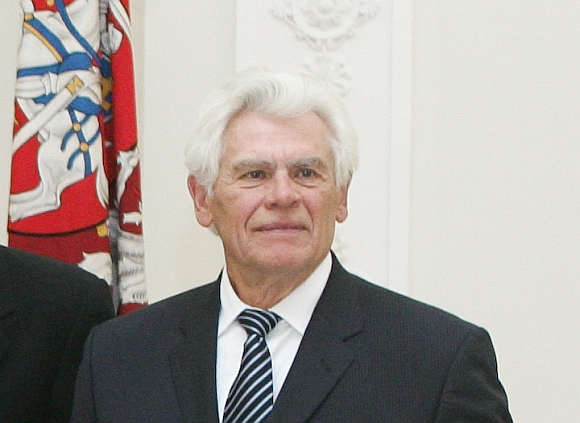

The collection reveals the life and work of the famous Lithuanian theatre director Jonas Jurašas. He was expelled from the position of director of the Kaunas State Drama Theatre in 1972. Jurašas did not agree to work under the proposed conditions of ‘Soviet theatre director’. He expressed his own view of what kind of working conditions and rights artists, and specifically theatre directors, should have. His terms were rejected by Soviet cultural administrators. Jurašas became unemployed, and had to endure poor living conditions. He and his family were among the first people in Soviet Lithuania to request permission to emigrate to the West, and received it from the Soviet government.
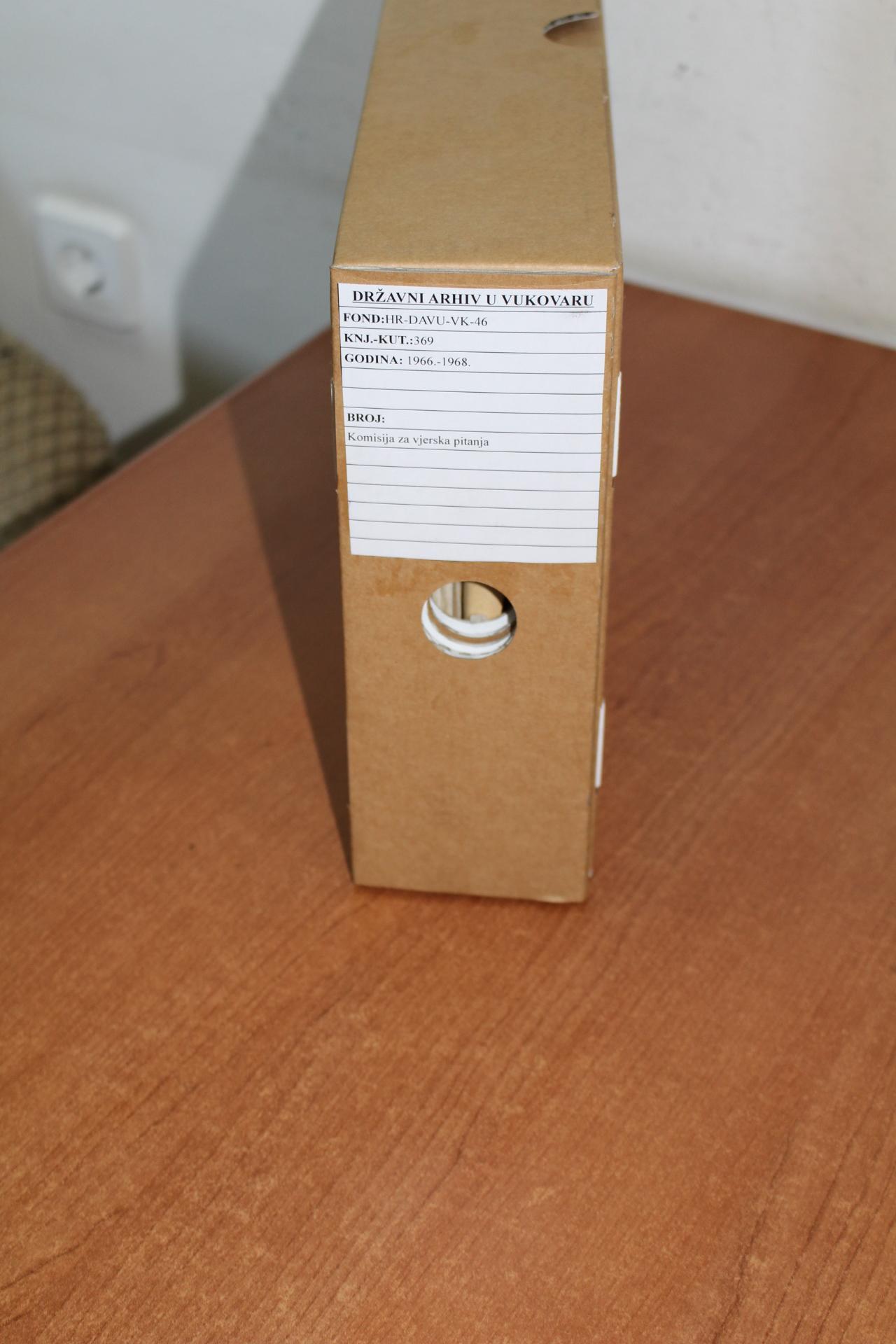

The records of the Commission on Religious Matters of the Vinkovci Municipal Assembly in the State Archives in Vukovar (at present situated in the Archival Collection Centre in Vinkovci) is a part of the archival fund of the Vinkovci Municipal Assembly covering the period from 1963 until 1993. The collection contains materials that testify to the local oppositional activity of different religious institutions from the area under the jurisdiction of the Vinkovci Municipal Assembly and also to the state control over them.
